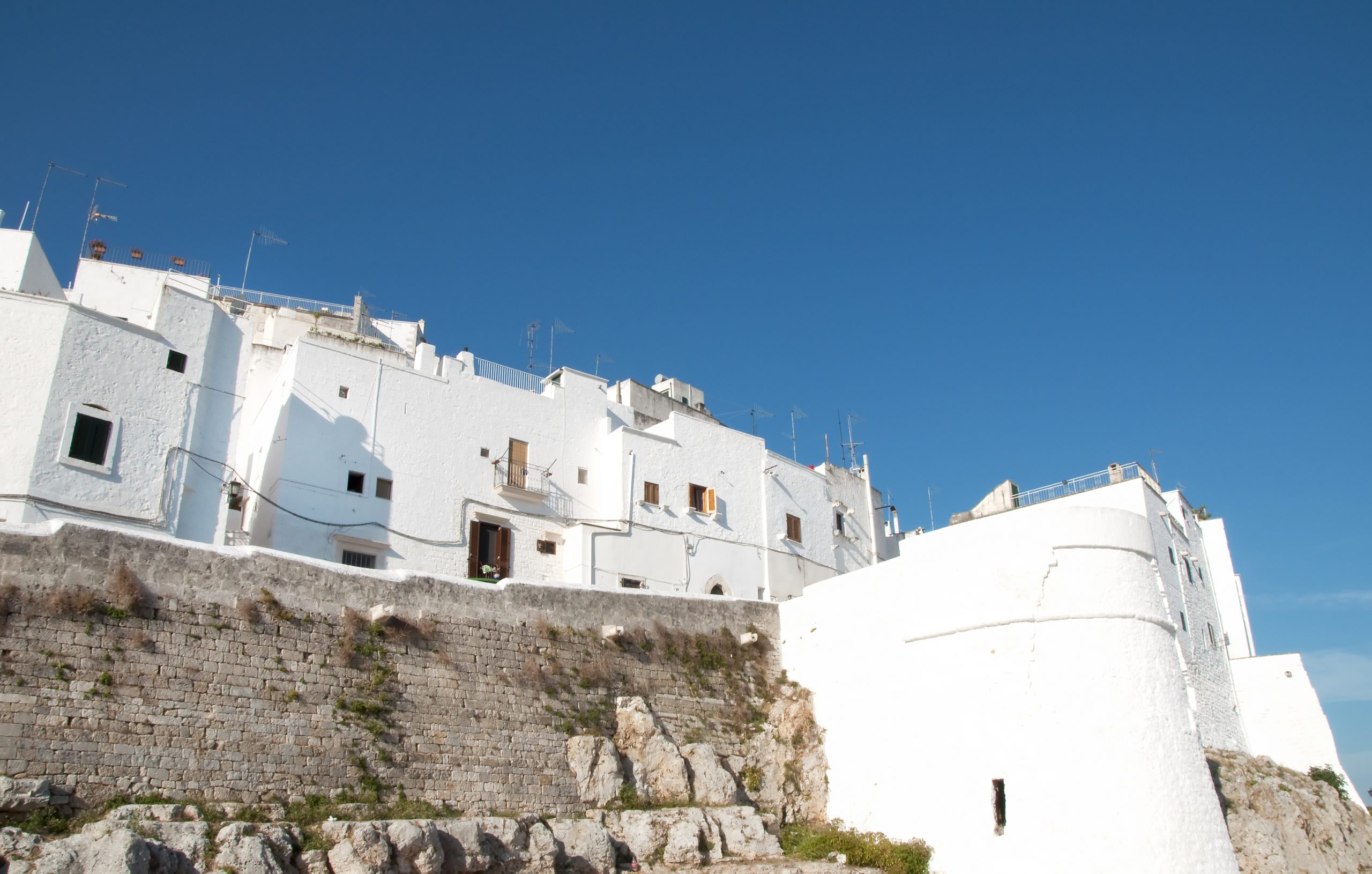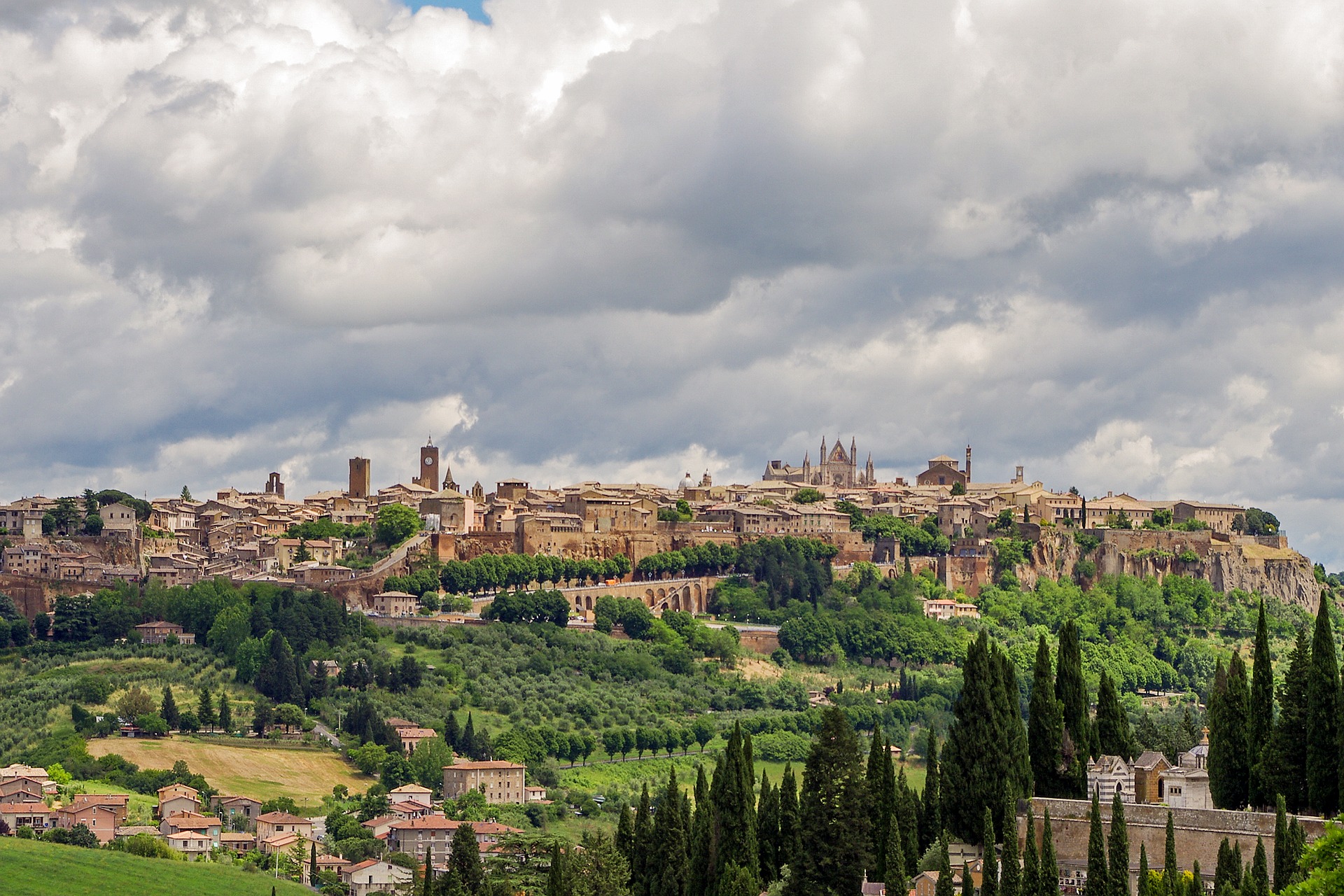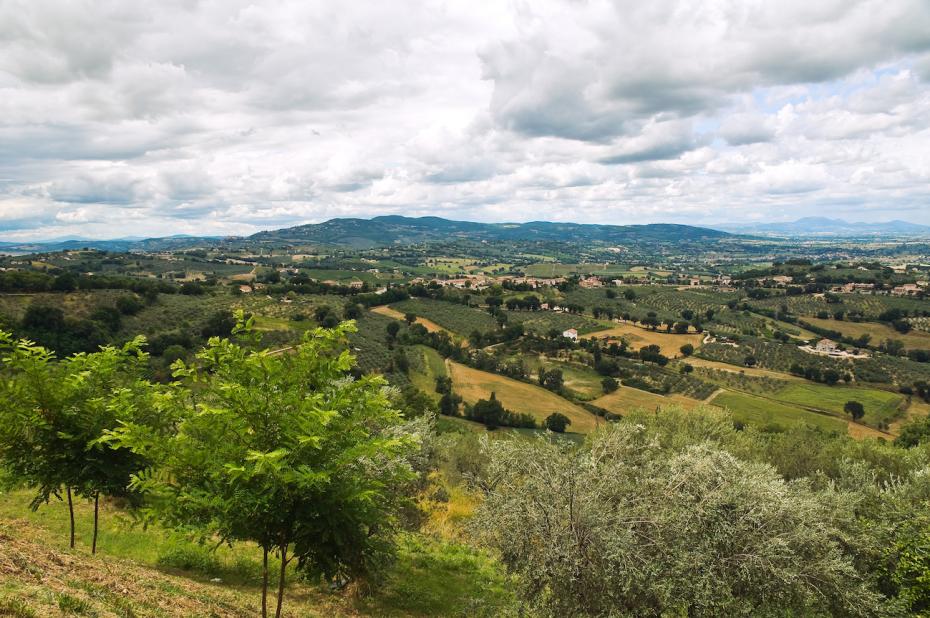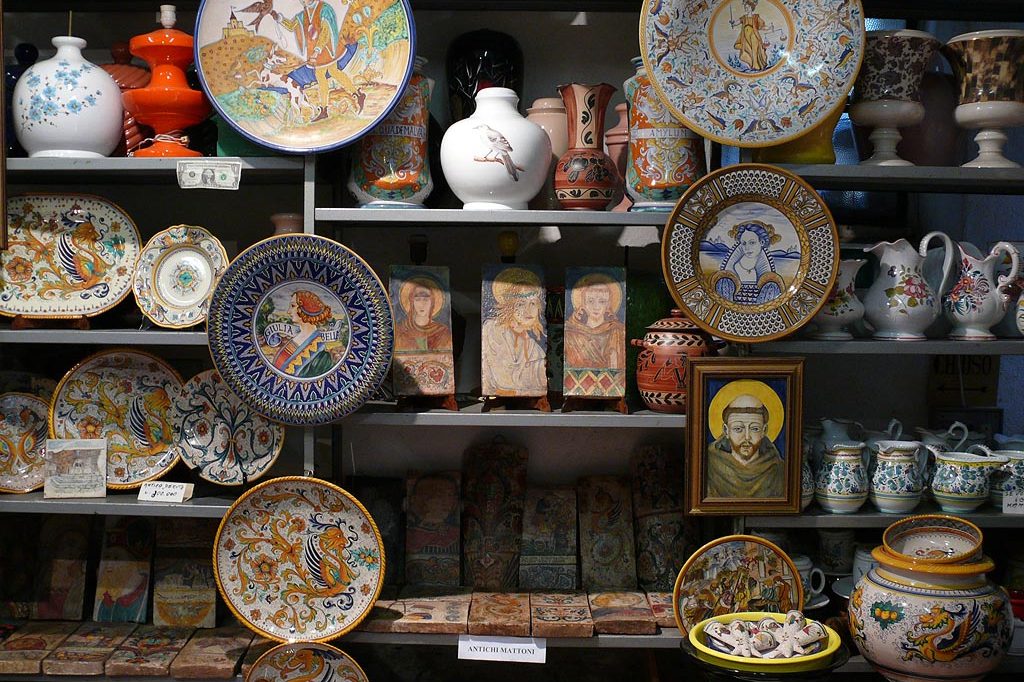Approaching Ostuni, it’s easy to see why it’s known as “the white city”! Looking out over the Adriatic, its whitewashed walls and buildings glisten in the sunlight giving it almost a fairy-tale like appearance.
Only a few kilometers from the Adriatic, these once imposing fortifications are now the homes of locals and part time visitors. And, by the way, it is required that they be painted white annually! In the center of the main square are partially excavated Roman ruins and an 18th century obelisk, but Ostuni is decidedly Greek in appearance. You will also notice some Baroque details and again we find Saint Oronzo who is also the patron saint of Lecce. (Apparently he saved both cities from the plaque and in this statue he looks a bit beleaguered from it all!).
Historically, like so many other cities in this region and along strategic coastlines, for that matter, Ostuni “protected” the other cities along the coast as it was the first to see the enemies approaching.
Rebuilt in the 1st and 2nd century AD by the Greeks, like so many towns in this region, Ostuni’s history includes various occupations and rulers (including the Romans, the Ostrogoths and the Longobards). The influence of Frederick II, who spent a great deal of time in Puglia constructing sixty-nine castles and forty-two cathedrals over a thirty year period, is apparent.
In the 16th century Isabella D’Aragona and then her daughter initiated an era of culture and art. Defensive walls were enlarged and towers were erected to protect the inhabitants from the attacks of the Turks. In the late 17th century, the city was sold 1679 to the Duke of Giovanni Zevallos whose family tyrannized the city until the Bourbons came to power. Finally, in 1860, Ostuni became part of the newly formed nation of Italy.
Ostuni is one of many lovely seaside towns of Puglia. History and charm converge into a picturesque and charming day here, don’t you agree?






























